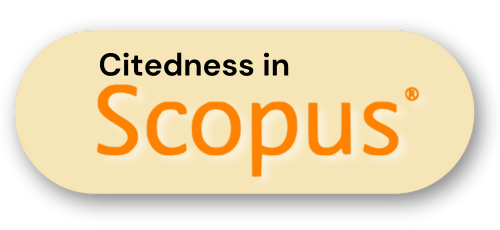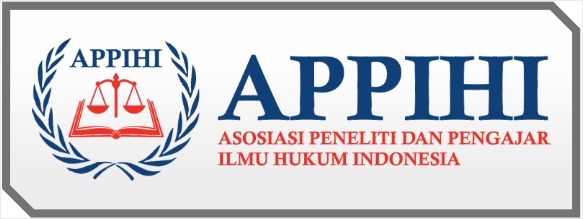Legal Adaptation in the Age of Digital Creativity: A Global Review
DOI:
https://doi.org/10.61194/law.v2i4.722Keywords:
Digital Copyright, Artificial Intelligence, Blockchain, DRM, Streaming Piracy, Fair Use, Copyright Law ReformAbstract
The rapid digitalization of creative industries has intensified the urgency to reassess copyright protection in the face of emerging technologies such as artificial intelligence, blockchain, and Digital Rights Management (DRM). This study aimed to explore the legal, technological, and policy challenges of digital copyright through a comprehensive narrative review of international academic literature and policy documents. Using thematic analysis, this study synthesized research findings and regulatory responses related to digital authorship, streaming piracy, fair use in digital education, and technological enforcement tools. Results show a growing disparity in copyright protection effectiveness between developed and developing countries due to differences in infrastructure, legal systems, and policymaking speed. The increasing prevalence of AI-generated content challenges traditional notions of authorship and moral rights. Blockchain is found to offer significant potential for transparent copyright verification, yet legal recognition remains inconsistent. DRM systems, while technically protective, often limit legitimate access and educational use. The findings underscore the necessity of harmonized international regulations, enhanced digital literacy, and adaptive national policies that consider cultural and infrastructural contexts. Recommendations include redefining authorship in the AI era, integrating fair use provisions into legal frameworks, and supporting controlled digital lending in educational institutions. This review highlights that the sustainable future of copyright in the digital era lies in legal flexibility, technological innovation, and inclusive policy development. Further interdisciplinary research is crucial to bridge the gap between technological advancement and equitable legal protection.
References
Abbas, A., Fatima, A., Sunguh, K., Avdic, A., & Xuehe, Z. (2018). Digital rights management system in China. Journal of Cases on Information Technology, 20(1), 20-30. https://doi.org/10.4018/jcit.2018010102 DOI: https://doi.org/10.4018/JCIT.2018010102
Ajetunmobi, R. (2018). Digital rights management system and administration: A wake-up call for Nigeria!. The Law and Development Review, 11(2), 609-625. https://doi.org/10.1515/ldr-2018-0031 DOI: https://doi.org/10.1515/ldr-2018-0031
Alsamara, T., Iriqat, M., & Zamouna, A. (2025). Legal protection of copyright in the digital era. Journal of Ecohumanism, 4(1). https://doi.org/10.62754/joe.v4i1.6008 DOI: https://doi.org/10.62754/joe.v4i1.6008
Álvarez, E., Bergara, S., & López‐Sintas, J. (2016). Regulating copyright in the digital age in Spain: The Sinde Law. Queen Mary Journal of Intellectual Property, 6(2), 236-247. https://doi.org/10.4337/qmjip.2016.02.06 DOI: https://doi.org/10.4337/qmjip.2016.02.06
Аronov, A. (2024). Copyright infringement in the digital age: The case for reform to Kazakhstan’s copyright laws. Access to Justice in Eastern Europe, 7(4), 242-266. https://doi.org/10.33327/ajee-18-7.4-a000110 DOI: https://doi.org/10.33327/AJEE-18-7.4-a000110
Barbosa, R. (2016). U.S. copyright law, technology and litigation. A national approach and its international consequences. Anuario Mexicano De Derecho Internacional, 1(16), 87. https://doi.org/10.22201/iij.24487872e.2016.16.522 DOI: https://doi.org/10.22201/iij.24487872e.2016.16.522
Bakhshandeh, M., Kolany-Raiser, B., Antunes, G., Yankova, S., Caetano, A., & Borbinha, J. (2014). A digital preservation-legal ontology. https://doi.org/10.5220/0005056602150222 DOI: https://doi.org/10.5220/0005056602150222
Bonadio, E., Lucchi, N., & Mazziotti, G. (2022). Will technology-aided creativity force us to rethink copyright’s fundamentals? Highlights from the platform economy and artificial intelligence. IIC - International Review of Intellectual Property and Competition Law, 53(8), 1174-1200. https://doi.org/10.1007/s40319-022-01213-7 DOI: https://doi.org/10.1007/s40319-022-01213-7
Borja, K., Rodríguez, S., & Roby, C. (2024). Streaming movies, series and shows: Attitudes and beliefs among Gen Zers. Young Consumers Insight and Ideas for Responsible Marketers, 26(1), 96-115. https://doi.org/10.1108/yc-04-2024-2057 DOI: https://doi.org/10.1108/YC-04-2024-2057
Brieske, J. (2023). Digital user rights and their enforcement: What is the copyright directive asking for? The Journal of World Intellectual Property, 27(1), 27-43. https://doi.org/10.1111/jwip.12286 DOI: https://doi.org/10.1111/jwip.12286
Colomo, P. (2017). Copyright licensing and the EU digital single market strategy., 339-357. https://doi.org/10.1017/9781316671313.018 DOI: https://doi.org/10.1017/9781316671313.018
Currier, C., & Centivany, A. (2021). Controlled digital lending. Proceedings of the Association for Information Science and Technology, 58(1), 80-91. https://doi.org/10.1002/pra2.438 DOI: https://doi.org/10.1002/pra2.438
Favale, M. (2014). Death and resurrection of copyright between law and technology. Information & Communications Technology Law, 23(2), 117-135. https://doi.org/10.1080/13600834.2014.925631 DOI: https://doi.org/10.1080/13600834.2014.925631
Finck, M., & Moscon, V. (2018). Copyright law on blockchains: Between new forms of rights administration and digital rights management 2.0. IIC - International Review of Intellectual Property and Competition Law, 50(1), 77-108. https://doi.org/10.1007/s40319-018-00776-8 DOI: https://doi.org/10.1007/s40319-018-00776-8
Gracz, K. (2013). Bridging the gaps between social and legal norms concerning protection of intellectual and artistic creations: On the crisis of copyright law in the digital era. The Journal of World Intellectual Property, 16(1-2), 39-57. https://doi.org/10.1002/jwip.12005 DOI: https://doi.org/10.1002/jwip.12005
Gurlitt, D., & Yaghubi, P. (2024). Report on the European Copyright Society’s conference of 2024. GRUR International, 74(3), 253-256. https://doi.org/10.1093/grurint/ikae141 DOI: https://doi.org/10.1093/grurint/ikae141
Handa, M., Ahuja, P., & Jain, S. (2022). Enjoying music and movies without paying: Examining factors affecting unauthorized downloading amongst young adults. Journal of Information Communication and Ethics in Society, 20(4), 568-586. https://doi.org/10.1108/jices-10-2021-0104 DOI: https://doi.org/10.1108/JICES-10-2021-0104
Hobbs, R. (2018). The Routledge companion to media education, copyright, and fair use. https://doi.org/10.4324/9781315637549 DOI: https://doi.org/10.4324/9781315637549
Houissa, A. (2014). Copyright laws in the Arab world: A shifting predicament in the digital era. Libri, 64(3). https://doi.org/10.1515/libri-2014-0022 DOI: https://doi.org/10.1515/libri-2014-0022
Khare, A., Singh, U., Kathuria, S., Akram, S., Gupta, M., & Rathor, N. (2023). Artificial intelligence and blockchain for copyright infringement detection. https://doi.org/10.1109/icecaa58104.2023.10212277 DOI: https://doi.org/10.1109/ICECAA58104.2023.10212277
Kirsanov, A., & Popovich, A. (2022). Legal control over copyright protection using blockchain technology. International Journal of Criminology and Sociology, 9, 895-900. https://doi.org/10.6000/1929-4409.2020.09.91 DOI: https://doi.org/10.6000/1929-4409.2020.09.91
Latif, M., Manap, N., & Althabhawi, N. (2025). Modernising site-blocking mechanism in protecting copyright owners content against digital piracy in Malaysia. Malaysian Journal of Syariah and Law, 13(1), 1-17. https://doi.org/10.33102/mjsl.vol13no1.763 DOI: https://doi.org/10.33102/mjsl.vol13no1.763
Lin, Z., & Chen, D. (2024). Using blockchain evidence in China’s digital copyright legislation to enhance the sustainability of legal systems. Systems, 12(9), 356. https://doi.org/10.3390/systems12090356 DOI: https://doi.org/10.3390/systems12090356
Margoni, T., & Kretschmer, M. (2022). A deeper look into the EU text and data mining exceptions: Harmonisation, data ownership, and the future of technology. GRUR International, 71(8), 685-701. https://doi.org/10.1093/grurint/ikac054 DOI: https://doi.org/10.1093/grurint/ikac054
Mazzi, F., & Fasciana, S. (2024). Video kills the radio star: Copyright and the human versus artificial creativity war. The Journal of World Intellectual Property, 27(3), 341-365. https://doi.org/10.1111/jwip.12304 DOI: https://doi.org/10.1111/jwip.12304
Nguyen, D., Nguyen, P., & Bui, K. (2023). Vietnam’s regulation on intellectual property rights protection: The context of digital transformation. International Journal for the Semiotics of Law - Revue Internationale De Sémiotique Juridique, 37(1), 259-278. https://doi.org/10.1007/s11196-023-10076-1 DOI: https://doi.org/10.1007/s11196-023-10076-1
Noller, D. (2025). Navigating copyright law and fair use in the age of digital education. J Physician Assist Educ, 36(1), e80-e82. https://doi.org/10.1097/jpa.0000000000000653 DOI: https://doi.org/10.1097/JPA.0000000000000653
Pavis, M. (2021). Rebalancing our regulatory response to deepfakes with performers’ rights. Convergence the International Journal of Research Into New Media Technologies, 27(4), 974-998. https://doi.org/10.1177/13548565211033418 DOI: https://doi.org/10.1177/13548565211033418
Peukert, C., & Windisch, M. (2024). The economics of copyright in the digital age. Journal of Economic Surveys. https://doi.org/10.1111/joes.12632 DOI: https://doi.org/10.1111/joes.12632
Pistorius, T., & Mwim, O. (2019). The impact of digital copyright law and policy on access to knowledge and learning. Reading & Writing, 10(1). https://doi.org/10.4102/rw.v10i1.196 DOI: https://doi.org/10.4102/rw.v10i1.196
Savelyev, A. (2018). Copyright in the blockchain era: Promises and challenges. Computer Law & Security Review, 34(3), 550-561. https://doi.org/10.1016/j.clsr.2017.11.008 DOI: https://doi.org/10.1016/j.clsr.2017.11.008
Tay, P., Sik, C., & Chan, W. (2017). Rethinking the concept of an ‘author’ in the face of digital technology advances: A perspective from the copyright law of a Commonwealth country. Digital Scholarship in the Humanities, 33(1), 160-172. https://doi.org/10.1093/llc/fqx015 DOI: https://doi.org/10.1093/llc/fqx015
Tóth, A. (2019). Algorithmic copyright enforcement and AI: Issues and potential solutions through the lens of text and data mining. Masaryk University Journal of Law and Technology, 13(2), 361-388. https://doi.org/10.5817/mujlt2019-2-9 DOI: https://doi.org/10.5817/MUJLT2019-2-9
Xiao, M. (2018). Regulating peer-to-peer technology in China: Inspiration from the United Kingdom. Queen Mary Journal of Intellectual Property, 8(4), 290-312. https://doi.org/10.4337/qmjip.2018.04.02. DOI: https://doi.org/10.4337/qmjip.2018.04.02






